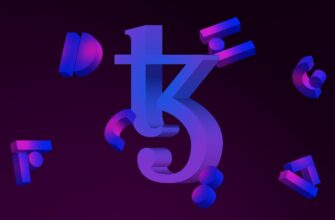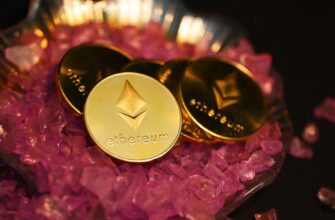- What Is RC-20 Ethereum? Clearing the Confusion
- How RC-20 (ERC-20) Tokens Work: The Technical Blueprint
- Top 5 Benefits of the ERC-20 Standard
- Popular RC-20 Tokens Dominating the Market
- Creating Your Own RC-20 Token: A Step-by-Step Guide
- RC-20 vs. Other Ethereum Standards: ERC-721, ERC-1155
- Future of RC-20: Ethereum Upgrades and Beyond
- RC-20 Ethereum FAQ
- Conclusion: The Unstoppable Force of Standardization
What Is RC-20 Ethereum? Clearing the Confusion
RC-20 Ethereum refers to the widely adopted ERC-20 token standard on the Ethereum blockchain. Though often misspelled as “RC-20,” this technical framework enables developers to create fungible tokens—digital assets interchangeable with identical value, like cryptocurrencies or loyalty points. These tokens fuel DeFi protocols, NFTs, and decentralized applications (dApps), forming Ethereum’s economic backbone.
How RC-20 (ERC-20) Tokens Work: The Technical Blueprint
ERC-20 defines six mandatory functions and three optional features that tokens must implement:
- totalSupply(): Reveals the token’s maximum circulation.
- balanceOf(): Checks a wallet’s token balance.
- transfer(): Moves tokens between addresses.
- approve(): Authorizes third-party spending (e.g., for DEX trades).
- allowance(): Tracks approved spending limits.
- transferFrom(): Enables delegated transfers.
This standardization ensures seamless interoperability. Wallets like MetaMask automatically recognize ERC-20 tokens, and exchanges list them without custom integration.
Top 5 Benefits of the ERC-20 Standard
- Interoperability: Tokens work across all Ethereum-compatible wallets, DApps, and exchanges.
- Simplified Development: Reduces coding time using pre-audited templates like OpenZeppelin.
- Liquidity Access: Easy listing on Uniswap or Sushiswap boosts token utility.
- Community Trust: Familiar standards attract investors and users.
- Composability: Tokens integrate into complex DeFi systems (e.g., lending/borrowing).
Popular RC-20 Tokens Dominating the Market
Notable ERC-20 tokens include:
- Stablecoins: USDC, DAI, USDT (Tether)
- DeFi Tokens: UNI (Uniswap), AAVE, MKR (MakerDAO)
- Utility Tokens: LINK (Chainlink), BAT (Basic Attention Token)
Together, they represent billions in market cap, demonstrating ERC-20’s scalability.
Creating Your Own RC-20 Token: A Step-by-Step Guide
- Set up an Ethereum wallet (e.g., MetaMask) and fund it with ETH for gas fees.
- Use Remix IDE or Hardhat to write a smart contract with ERC-20 functions.
- Customize token details: Name (e.g., “MyToken”), Symbol (e.g., “MTK”), and supply.
- Test the contract on a testnet like Goerli.
- Deploy to Ethereum Mainnet and verify the code on Etherscan.
Costs vary from $50-$500+ depending on gas prices and complexity.
RC-20 vs. Other Ethereum Standards: ERC-721, ERC-1155
While ERC-20 handles fungible tokens, other standards serve niche uses:
- ERC-721: For non-fungible tokens (NFTs) like CryptoPunks.
- ERC-1155: Hybrid standard supporting both fungible and non-fungible assets.
ERC-20 remains optimal for currencies, governance tokens, and reward systems.
Future of RC-20: Ethereum Upgrades and Beyond
Ethereum’s shift to Proof-of-Stake (Merge) and layer-2 scaling (e.g., Arbitrum, Optimism) enhance ERC-20 efficiency. Emerging improvements include:
- ERC-20 Permit: Gasless token approvals via signatures.
- Cross-Chain Bridges: Moving tokens to chains like Polygon or BNB Chain.
- Token Extensions: Customizable compliance features for enterprises.
RC-20 Ethereum FAQ
Q: Is RC-20 the same as ERC-20?
A: Yes—”RC-20″ is a common misspelling. The correct term is ERC-20 (Ethereum Request for Comments 20).
Q: Can ERC-20 tokens be mined?
A: No. They’re minted via smart contracts, not mined like ETH. Supply is fixed at creation.
Q: Are ERC-20 tokens safe?
A: Security depends on contract audits. Well-known tokens (USDC, UNI) are highly secure, but scams exist. Always verify contracts.
Q: What gas fees apply to ERC-20 transfers?
A: Fees vary with network congestion. Layer-2 solutions reduce costs by up to 90%.
Q: Can ERC-20 tokens operate on other blockchains?
A: Via bridges (e.g., Multichain) or wrapped versions (e.g., wBTC on Polygon).
Conclusion: The Unstoppable Force of Standardization
As Ethereum evolves, the ERC-20 standard remains pivotal for token innovation. Its simplicity and adaptability continue to drive DeFi, gaming economies, and real-world asset tokenization—proving that even a “typo” like RC-20 can’t diminish its foundational role in crypto’s future.








